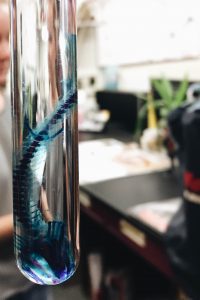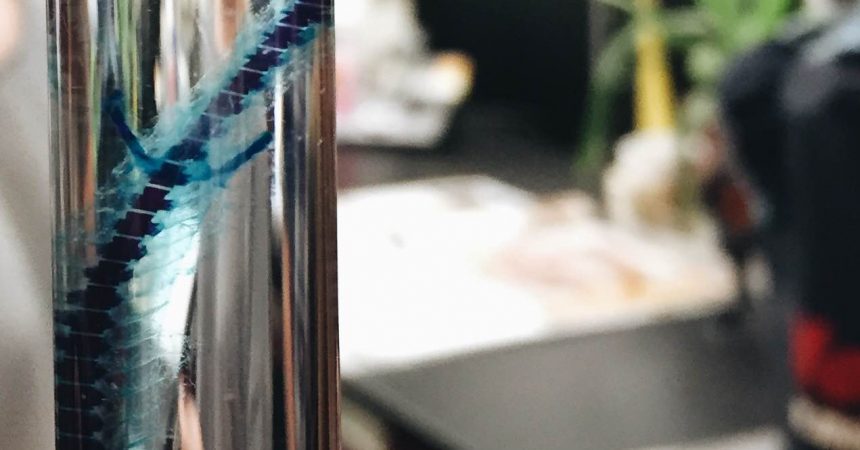Zoo InternQuest is a seven-week career exploration program for San Diego County high school juniors and seniors. Students have the unique opportunity to meet professionals working for the San Diego Zoo, Safari Park, and Institute for Conservation Research, learn about their jobs, and then blog about their experience online. Follow their adventures here on the Zoo’s website!
 We normally think a typical veterinarian’s job is to diagnose and take care of only animals that are alive. However, interns learned that the role of a veterinarian can go beyond the life of the actual animal. On Wednesday, interns had the privilege of meeting Veterinary Pathologist fellows Dr. Megan McCarthy and Dr. Set Sokol, as well as resident Dr. Adam Michel. The doctors introduced the interns to the importance of investigating dead animals, in order to discover new zoological diseases and understand how to prevent the death of animals. Come along, as we learn the important role that Zoological Pathology plays in the world of conservation!
We normally think a typical veterinarian’s job is to diagnose and take care of only animals that are alive. However, interns learned that the role of a veterinarian can go beyond the life of the actual animal. On Wednesday, interns had the privilege of meeting Veterinary Pathologist fellows Dr. Megan McCarthy and Dr. Set Sokol, as well as resident Dr. Adam Michel. The doctors introduced the interns to the importance of investigating dead animals, in order to discover new zoological diseases and understand how to prevent the death of animals. Come along, as we learn the important role that Zoological Pathology plays in the world of conservation!
Working at the Wildlife Disease Laboratory, Dr. McCarthy, Dr. Sokol and Dr. Michel must combine the information found in the clinical history, blood work, necropsy, histopathology and culture results to come to a diagnosis. Let’s break these terms down. The clinical history of an animal allows Veterinary Pathologists to know the medical history of each animal when it is was alive and if the animal died suddenly, or after hospitalization and/or treatment. Blood work allows them to see the condition of the animal’s red and white blood cells, and if there is an infection or disease present that can be detected. Necropsies are biopsies for animals, where Veterinarian Pathologists collect tissue samples. With necropsies, pathologists can sometimes identify a disease upon initial examination. However, further investigation is sometimes needed by the means of histopathology wherein a thin slice of tissue is put onto a stained slide. The stain has the ability to highlight cell types, infectious agents or substances in tissues. In a culture, cells of the animal are cultivated to see if harmful bacteria form. All these elements combined allow Veterinarian Pathologists to practice diagnostic pathology, and determine how and why an animal at the Zoo and Safari Park died.
This process towards a diagnosis is exhibited with the case of the coughing California condor. The condor’s status of endangerment can be attributed to lead poisoning within the birds. With only about 400 California condors left in the wild, each condor is crucial for the conservation of the species of bird. Given their fragile status, a coughing wild adult male condor was hospitalized and diagnosed and treated for lead poisoning. However, even with the treatment, the condor died. Veterinarian Pathologists work then began as they worked to figure out whether there was an unknown pathological threat to the wild population of California condors. The blood work conducted showed that there was an increased level of white blood cells, which indicated it was fighting an illness. However, the lead levels were back to normal due to treatment. A necropsy was then done revealing that the bird’s air sac was abnormal as it was yellow and thick with white spots dispersed throughout the tissue. The initial examination could not lead to a diagnosis, so histopathology came into play and slides revealed fungus. As a confirmation, the culture results showed that the bird had Aspergillus in its tissue, which is caused by a fungus found in the environment. A normal functioning immune system would be able to fight the disease, but the pathologists diagnosed that the fungus infects birds with pre-existing immunosuppression, which can be caused by elevated levels of lead in the body. This finding contributed to conservation efforts as the new risk to the condor was found to be a factor that could further deplete the population.
Zoological Pathology – diseases within exotic animals – is still poorly understood. Therefore, the job of a Veterinary Pathologist is very important in identifying new diseases and better understanding the difference between domestic and exotic animal diseases. With new-found knowledge of exotic animal diseases, places like the Zoo and other conservation organizations, can have a better understanding of how to maintain the animals’ health. Not only is Veterinary Pathology important in maintaining an individual’s life, it can also effect the whole population. Therefore, more research into diseases by Veterinary Pathologists can determine whether specific diseases can spread throughout the whole population of a species and be detrimental to conservation efforts. In order to prevent or stop the disease, pathologists consult nutritionists and inform keepers of what changes to make in medicine and diet. All these efforts have the goal of conserving wildlife populations in and outside managed care.
After learning about pathology, I now understand the importance of disease in conservation efforts and in taking care of exotic animals. When exploring conservation and why a species is going extinct, it’s important to look beyond the surface details. You should critically consider how our habits are changing animals’ habitat, and how that can cause them to contract diseases, such as lead poisoning. One should always be mindful of how our actions and what we use everyday impact the environment and the animals within it. Also, when visiting the Zoo, please be respectful of the animals by refraining from throwing food or coins in the exhibits as that can cause obstructions in the animal’s bodies and other health-related issues. Similarly, when out in the real world do not litter, since trash and other toxins can cause deadly diseases and health problems for wildlife organisms.
Emma, Conservation Team
Week Four, Fall Session 2016


